Paint Dreamy Watercolors: Your Guide to Midjourney Watercolor Prompts
Updated on
Want to bring your artistic visions to life with stunning watercolor paintings, but lack the time or traditional materials? Create dreamy watercolors with the power of Midjourney. This guide will equip you with the knowledge and inspiration to craft captivating prompts for Midjourney. Whether you're a seasoned artist or a curious beginner, exploring watercolor techniques through Midjourney can show a whole new level of creative expression and artistic output.
Effective Midjourney Watercolor Prompts, Examples, and Tips
The Art of Prompt Structure
Creating a successful Midjourney prompt involves more than just describing an image; it requires a thoughtful structure that guides the AI to produce the desired outcome. Key elements of a well-structured prompt include:
- Adjectives: Descriptive words that capture the essence of the style, mood, and atmosphere you want to achieve.
- Descriptors: Specific details about the subject, such as "mountainous landscape" or "portrait of a young woman."
- Style References: Mentioning particular watercolor techniques or artists can help the AI understand the intended style, such as "soft washes" or "inspired by John Singer Sargent."
For instance, a prompt like "A serene landscape with soft washes of pastel colors, inspired by Impressionist techniques" provides the AI with clear guidance on the desired mood, color palette, and artistic style.

💬 /imagine
Midjourney Watercolor Prompts Keywords
Selecting the right keywords is pivotal in conveying your desired watercolor style, texture, and mood. Words like "ethereal," "vibrant," "subtle," or "dynamic" can steer the AI towards specific visual outcomes. For texture, terms like "grainy," "smooth," "layered," or "transparent" are effective. Keywords should be chosen carefully to ensure they accurately reflect the intended watercolor effect, guiding the AI to recreate the nuances of watercolor painting.
Consider the impact of keywords such as "delicate," "fluid," "bold," and "abstract." These words help define the overall feel of the piece. Additionally, specific descriptors like "misty morning," "golden sunset," or "wildflower meadow" can paint a vivid picture in the AI's mind, enhancing the clarity and specificity of the prompt.
Painting with WordsUsing descriptive language to evoke the essence of watercolor is an art in itself. Consider how words can translate visual elements such as light, shadow, and color blending. Phrases like "a gentle wash of pastel hues," "bold strokes of deep indigo," or "a seamless blend of warm tones" can paint a vivid picture for the AI. Descriptions should aim to capture not just the visual, but the emotional and atmospheric qualities of watercolor art, bringing the medium to life through text.
To effectively communicate your vision, it's helpful to think about the sensory experience of watercolor painting. Words that describe the texture, movement, and interplay of colors can enhance the AI's understanding of your desired outcome. For example, "a tranquil lakeside scene with soft, shimmering reflections and delicate washes of blue and green" provides a rich, multi-sensory description that can guide the AI more precisely.
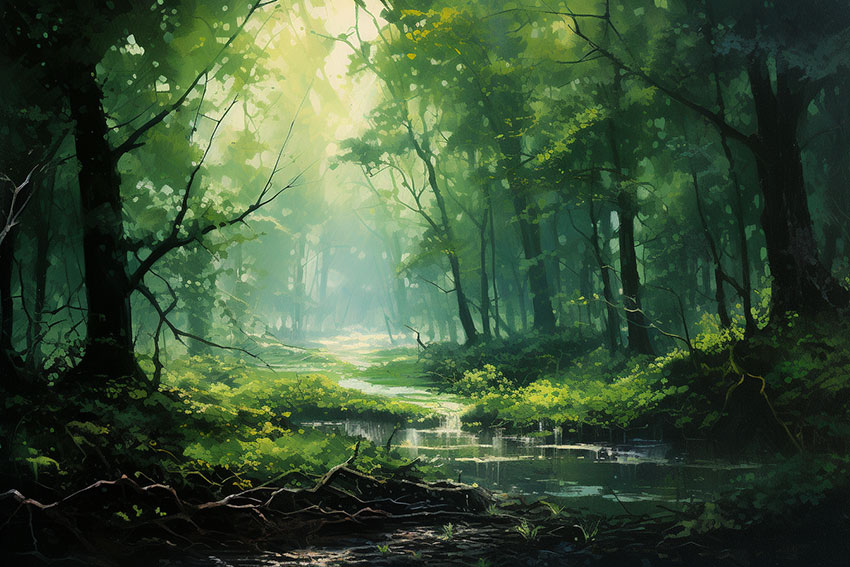
💬 /imagine
Upscale Midjourney Watercolor Painting
Imagine your artwork transformed into prints that command attention, or stock images that captivate audiences. With enhanced clarity and detail, your watercolors can become the centerpiece of a gallery exhibition or a lucrative asset. Don't let the limitations of resolution hold back your artistic vision.
Want to see your beautiful Midjourney watercolor creations in stunning detail? AI image enhancers, like Aiarty Image Enhancer, can breathe new life into your artwork. This powerful tool goes beyond simple upscaling (up to 32x!). The AI photo enhancer tool can sharpen, deblur, and denoise your watercolors, revealing hidden details and enhancing the overall vibrancy. Imagine your artwork transformed – crisp lines, smooth transitions, and colors that pop.
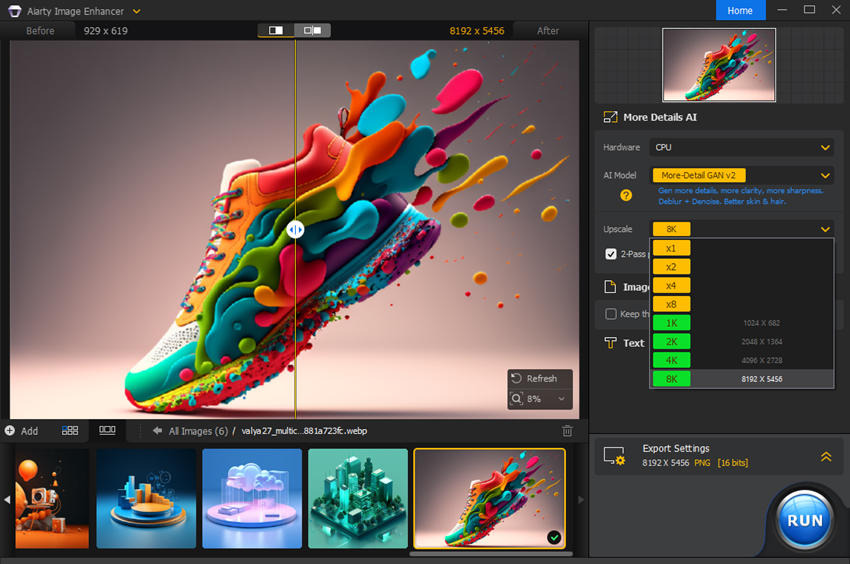
Midjourney Watercolor Prompts for Diverse Subjects
Capture Nature's BeautyNature is a perennial favorite subject for watercolor artists. The medium’s capacity to capture light, atmosphere, and subtle variations in color makes it perfect for landscapes, seascapes, and botanical studies.
Landscapes
Landscapes offer a vast canvas for watercolor artists to explore. The interplay of light and shadow, the vastness of open spaces, and the subtle gradients of color in the natural world make landscapes an ideal subject.This prompt combines detailed descriptors with atmospheric elements, guiding the AI to create a tranquil, immersive scene.
Example Prompt: "A serene mountain landscape at dawn, with soft washes of pink and purple hues in the sky, and delicate green washes for the rolling hills below. The morning mist adds a layer of ethereal beauty, with trees and rocks gently emerging from the fog."

💬 /imagine
Seascapes
The fluidity of watercolor makes it especially suited for capturing the dynamic nature of water. Seascapes can range from calm, reflective waters to tumultuous, crashing waves.
Example Prompt: "A stormy seascape with crashing waves rendered in bold strokes of deep blue and white, the sky a turbulent mix of gray and black. The dark, moody atmosphere is heightened by the churning sea and the distant silhouette of a lighthouse." Here, the prompt emphasizes movement, texture, and atmosphere, encouraging the AI to capture the drama and energy of the scene.
💬 /imagine
Botanical Elements
Watercolor's delicate touch is perfect for botanical illustrations, where the focus is on capturing the intricate details and vibrant colors of plants and flowers.
Example Prompt: "A bouquet of wildflowers in vibrant, delicate washes of yellow, red, and green, each petal and leaf distinct yet blending seamlessly. The composition is airy and light, with a soft background wash that highlights the vivid colors of the flowers."This prompt uses specific color descriptors and focuses on the intricate details of the subject, guiding the AI to create a detailed and harmonious botanical illustration.
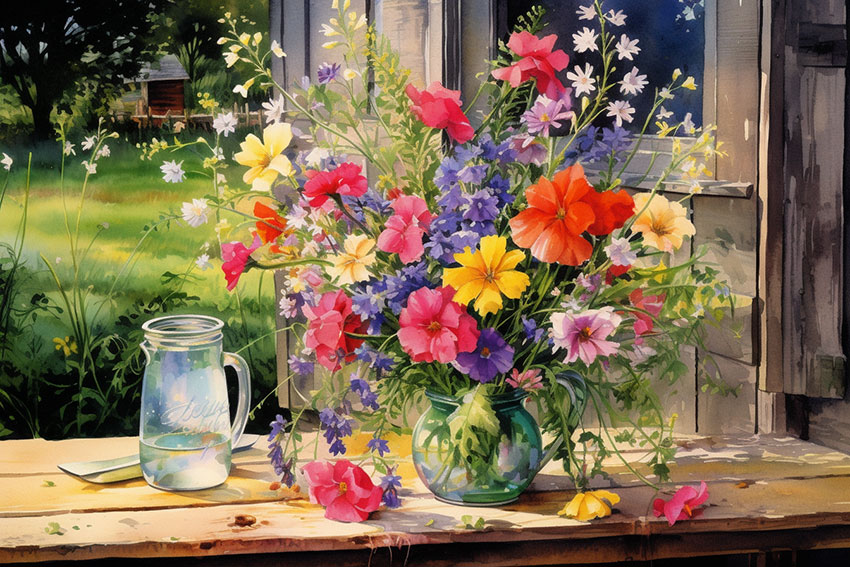
💬 /imagine
Portraying the Human Form
Watercolor is also well-suited for capturing the nuances of the human form, from delicate portraits to dynamic figure studies.
Portraits
Portraits in watercolor can capture the subtle variations in skin tone, the play of light and shadow, and the unique features of the subject.
Example Prompt: "A close-up portrait of an elderly woman, her wrinkles and gray hair rendered in soft, muted washes of brown and gray, with hints of warm ochre for her skin. Her eyes are deep and expressive, reflecting a lifetime of experiences." This prompt emphasizes specific features and uses color to convey the depth and character of the subject.
A playful child, laughing, surrounded by wildflowers, loose brushstrokes, vibrant colors, impressionist style"
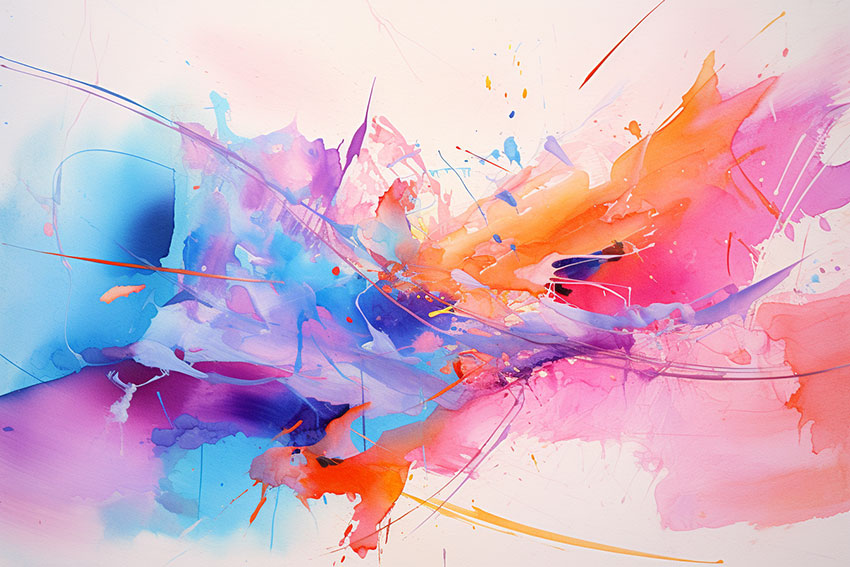
💬 /imagine
Figure Studies
Figure studies in watercolor can capture the fluidity and grace of the human body in motion.This prompt combines movement, color, and composition to create a dynamic and expressive figure study.
Example Prompt: "A dancer in motion, her body a fluid blend of bold, expressive strokes in shades of blue and purple, capturing the grace and energy of her movement. The background is a wash of soft, complementary colors, highlighting her dynamic pose."Abstract Landscapes
Abstract landscapes blend the real and the imagined, using color and form to evoke a sense of place and emotion.
Example Prompt: "A dreamlike landscape with abstract forms and washes of pastel pinks, blues, and greens, creating a surreal and whimsical scene. The horizon is a blend of soft gradients, with shapes and colors flowing seamlessly into each other." This prompt encourages the AI to explore a more imaginative and freeform approach to landscape painting.

💬 /imagine
Geometric Abstractions
Geometric abstractions use shapes and colors to create a structured yet dynamic composition.
Example Prompt: "A composition of intersecting geometric shapes in vibrant watercolor washes, each shape blending into the next with soft edges and gradients. The colors are bold and contrasting, creating a sense of movement and depth."

💬 /imagine
Understanding Watercolor Techniques and Styles
The Essence of Watercolor Painting
Watercolor painting is revered for its ethereal and fluid qualities. Unlike other mediums, watercolor allows for transparency and luminosity, creating layers of color that can range from delicate washes to intense hues. The unpredictability of watercolor, where pigments blend and spread with water, adds a dynamic and spontaneous element to each creation. Mastering this medium involves understanding how water interacts with pigment, paper, and brushstrokes, leading to unique textures and effects that are distinctive to watercolor.
Watercolor’s fluidity stems from its simple composition: pigment suspended in a water-soluble binder. This simplicity belies the complexity of its application, where water, paper, and pigment must be balanced to achieve the desired effect. Techniques such as wet-on-wet, where wet paint is applied to wet paper, produce soft, flowing transitions, while wet-on-dry techniques create sharper, more defined edges. The type of paper used, whether rough or smooth, also significantly impacts the final result, influencing the texture and absorbency of the paint.

Watercolor Styles
Watercolor painting encompasses a diverse array of styles, each with its own charm and technique. Some artists prefer the soft, almost dreamlike washes that evoke a sense of serenity and calm. Others gravitate towards bolder, more expressive strokes that convey energy and emotion. Realistic styles capture intricate details with precision, while abstract styles embrace spontaneity and imagination. Understanding these styles is crucial when crafting Midjourney prompts, as it allows you to specify the desired aesthetic, from delicate gradients to dynamic splashes of color.
Traditional Realism: This style emphasizes lifelike representation with meticulous attention to detail. Artists often build up layers of transparent color to achieve depth and dimension, focusing on accurate color mixing and precision.
Impressionistic Watercolors: Inspired by the Impressionist movement, this style captures the essence of a subject rather than its precise details. Broad, loose strokes and a focus on light and color characterize this approach, evoking an emotional response rather than a realistic portrayal.
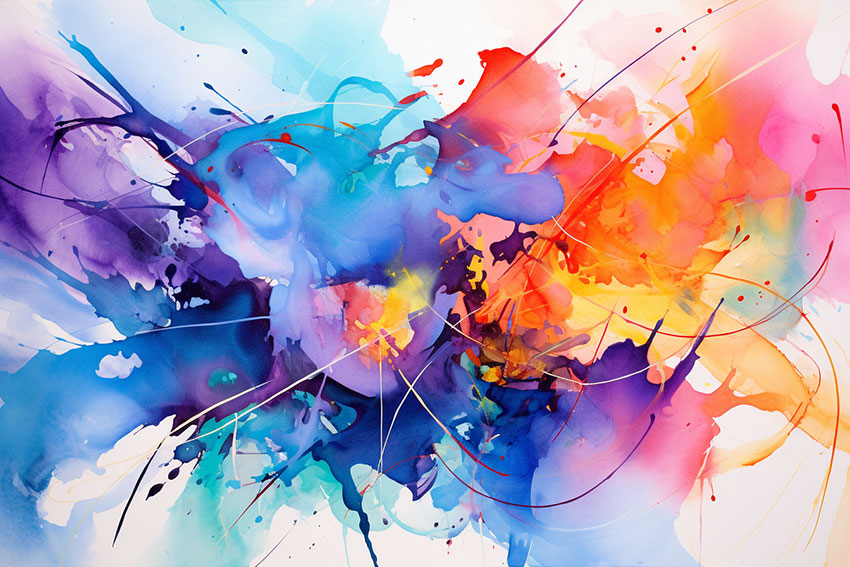
Abstract Watercolor: Abstract watercolor breaks free from the constraints of realism, allowing artists to explore color, shape, and texture in a more freeform manner. This style often involves bold, spontaneous strokes and an emphasis on the emotional or expressive qualities of the paint.
Botanical Illustration: Combining the precision of scientific illustration with the fluidity of watercolor, this style focuses on detailed and accurate depictions of plants and flowers. The delicate nature of watercolor lends itself well to capturing the intricate details of botanical subjects.
Loose and Expressive: This style embraces the unpredictable nature of watercolor, with loose brushwork and a focus on capturing movement and energy. It's less about precise detail and more about conveying a feeling or mood through dynamic, flowing strokes.